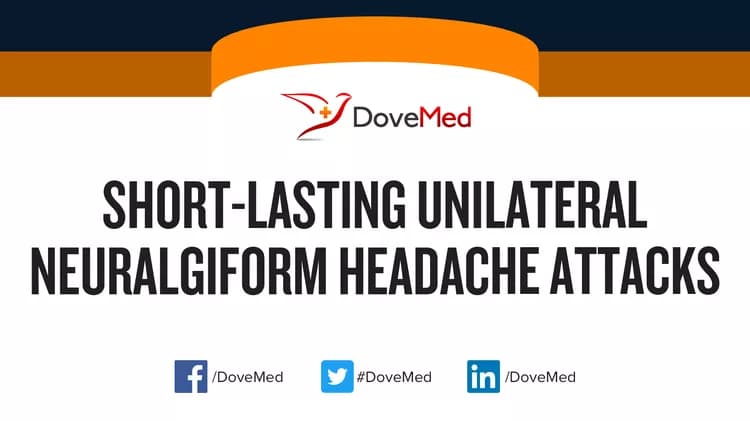
Short-Lasting Unilateral Neuralgiform Headache Attacks
What are the other Names for this Condition? (Also known as/Synonyms)
- SUNHA (Short-Lasting Unilateral Neuralgiform Headache Attacks)
What are Short-Lasting Unilateral Neuralgiform Headache Attacks? (Definition/Background Information)
- Short-Lasting Unilateral Neuralgiform Headache Attacks (SUNHA) are subtypes of a large group of disorders that are collectively termed trigeminal-autonomic cephalalgias (TACs), which are uncommon primary headache disorders; the term “primary” indicating that a clear cause for the condition remains unidentified
- In Short-Lasting Unilateral Neuralgiform Headache Attacks, the headache attacks are moderate-to-severe, occur at least once daily, lasting from a few seconds to even 10 minutes, and only involve one side of the head (termed hemicrania). The head pain may be described as a stabbing pain, with either single or multiple stabs being felt by the individual with SUNHA
- The pain may either involve the side of the head (above the ear) or the region around/above the eyes, or simultaneously all of these regions. Apart from the pain, Short-Lasting Unilateral Neuralgiform Headache Attacks may also present congestion of the nose, increased tearing, swollen eyelid, sweating of the face and forehead, including aural fullness
- There are two main forms of Short-Lasting Unilateral Neuralgiform Headache Attacks, namely:
- Short-Lasting Unilateral Neuralgiform Headache Attacks with Conjunctival Injection and Tearing (SUNCT)
- Short-Lasting Unilateral Neuralgiform Headache Attacks with Cranial Autonomic Symptoms (SUNA)
- Even though rare, individuals of any age group, gender, race, or ethnicity may be at risk for Short-Lasting Unilateral Neuralgiform Headache Attacks. However, most cases are noted during adulthood
The criteria for diagnosis of Short-Lasting Unilateral Neuralgiform Headache Attacks as outlined by the International Headache Society (IHS) is given below:
- At least 20 attacks fulfilling all the criteria below
- Moderate or severe unilateral head pain, with orbital, supraorbital, temporal and/or other trigeminal distribution, lasting for 1 to 600 seconds and occurring as single stabs, series of stabs, or in a saw-tooth pattern
- At least one of the following five cranial autonomic symptoms or signs, ipsilateral to the pain:
- Conjunctival injection and/or lacrimation
- Nasal congestion and/or rhinorrhea
- Eyelid edema
- Forehead and facial sweating
- Forehead and facial flushing
- Sensation of fullness in the ear
- Miosis and/or ptosis
- Occurring with a frequency of at least one a day
- Not better accounted for by another ICHD-3 diagnosis
(Source: International Headache Society Classification ICHD-3, London, United Kingdom)
Related Articles
Test Your Knowledge
Asked by users
Related Centers
Related Specialties
Related Physicians
Related Procedures
Related Resources
Join DoveHubs
and connect with fellow professionals

0 Comments
Please log in to post a comment.